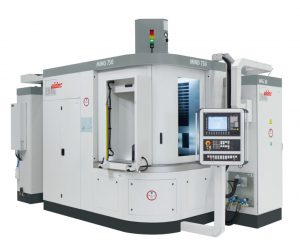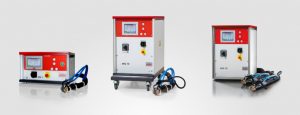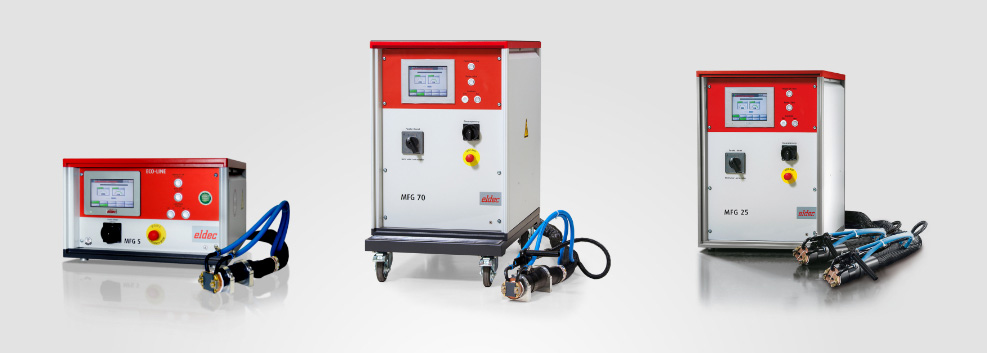Even though statistics on electric mobility show only moderate growth in automotive markets, the Center of Automotive Management (CAM) predicts a significant upswing in market dynamics from 2020. For Germany and the EU, this means an exponential increase in electric car sales and a fundamental change in drive technologies.
However, even at the moderate growth rates today, output quantities in electric motor production are already a challenge for production planners. They need to establish new production solutions to enable fast and reliable production of electric motor components.
This process frequently involves the induction specialists at eldec. The reason is that induction shows its strength in applications such as heating motor cases before joining, preheating rotor shafts before welding, and hardening rotor shafts and gears. The process is faster, more precise, and more reliable than many alternatives. It also integrates perfectly into any production environment.
Large output quantities, high precision, and flexible production will define the conditions for electric motor production in the future. The question is, which technology is able to establish highly efficient and reliable processes for a vastly increased production output?
In many cases, the answer to this question includes induction technology. Electric motors have numerous components like rotors, stators, or gears in integrated gearheads that need to be heated before joining or welding or that require hardening. Induction heating and hardening are ideal technologies for the above applications.
Joining in electric motor production as an example: precision heating protects the component
In electric motor production, joining is often an essential process step to create a force-fitting connection between two parts. For joining, the rotor plate package, for example, needs to be pre-heated to 180 and 220 °C using induction. Then the rotor shaft can be joined to the rotor plate package with little force. In case of the rotor plate package, the heating time is only 90 seconds.
In a similar way, induction technology can also be used to heat the motor case for joining the stator, or to heat gears for joining them to shafts.
Induction heating as an example: perfect integration into the production flow
Electric motor producers should consider holistic MIND hardening machines. Through the precise selection of power and frequency, the holistic system guarantees a hardness pattern in accordance with customer requirements (e.g. for gears or rotor shafts). The induction heating takes place in the desired hardening area and takes only two to three seconds for a gear or 1.3 seconds for a rotor shaft.
MIND hardening machines are configured modularly for the workpiece dimensions and desired hardness pattern. The system is, therefore, available as a manually loaded standalone solution or as a line-capable hardening cell that is loaded by a robot or gantry.

MIND systems integrate comprehensive hardening processes in one machine, e.g. simultaneous hardening of several areas of a workpiece, annealing processes, geometry and workpiece inspection, and many more.
Application examples from electric motor production
Two final examples show the versatility of eldec technologies for use in electric motor production:
The 30 kW ECO LINE generator can also be used to heat the entire stator to 110 to 130 °C before impregnating the winding. Induction pre-heating for welding – such as for rotor shafts – is similarly important for many production processes. It is an effective way to prevent cracks in the parts at the high welding temperatures.

ECO LINE – the middle class: Energy sources as a standalone solution or for integration into systems (MF and HF 5 – 150 kW).

1 comment
Thanks for sharing this article on Electric Motors